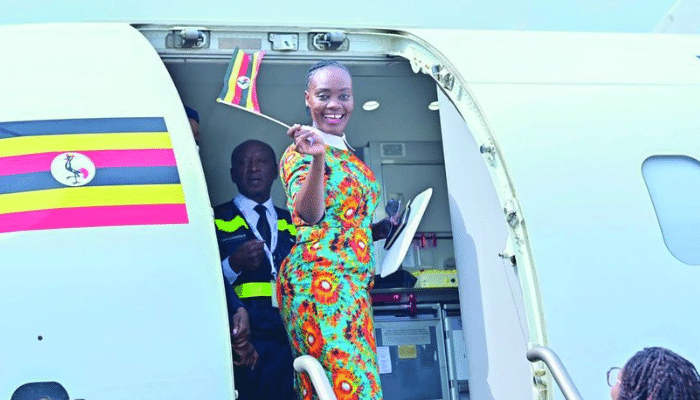
Uganda Airlines, the country’s national carrier, is bracing for higher financial losses in the 2024/25 financial year, even as it records growth in passenger numbers and revenues. The flag carrier, which was revived in 2019, remains in its expansion phase and continues to operate at a loss while investing heavily in fleet development, route expansion, and operational systems.
Rising Passenger Numbers but Mounting Losses
According to projections, the airline is expected to record losses exceeding those of the previous year. This comes despite a steady rise in passenger traffic, fueled by an increase in regional flights and the growth of long-haul operations. Industry analysts note that while Uganda Airlines is attracting more travelers, high operating costs—especially for fuel, fleet maintenance, and staff expansion—are offsetting revenue gains.
Investments in Expansion
The airline has been scaling up its international presence, flying to major destinations in Africa, the Middle East, and Asia. New routes and additional frequencies are part of its long-term strategy to compete with established African carriers such as Ethiopian Airlines, Kenya Airways, and RwandAir.
Uganda Airlines has also invested in modern aircraft, including Airbus A330neos and Bombardier CRJ900s, to strengthen its appeal for both regional and intercontinental passengers. However, the costs of financing and operating these aircraft remain a challenge.
Why the Losses Are Growing
Several factors explain the airline’s widening financial gap:
- High operational costs – Rising global fuel prices and aircraft maintenance expenses remain a heavy burden.
- Slow return on investment – Newly launched routes require time to build consistent passenger numbers.
- Competitive market – Established regional carriers dominate key routes, forcing Uganda Airlines to keep ticket prices competitive.
- Economic pressures – Uganda’s economy is still under strain, limiting disposable income for air travel.
Government’s Role and Future Outlook
The Ugandan government, which fully owns the airline, has continued to provide financial support, viewing the carrier as a strategic investment in boosting tourism, trade, and connectivity. Officials argue that short-term losses are part of the growth phase and that long-term profitability is possible once passenger volumes and route networks stabilize.
Industry experts suggest that the airline will need to strengthen partnerships, improve cost management, and focus on profitable routes to reduce losses. Strategic codeshare agreements and alliances could also help expand its reach without incurring heavy operational costs.
Conclusion
Uganda Airlines is at a crossroads—expanding its passenger base and international presence while grappling with deepening losses. The 2024/25 financial year will test the airline’s resilience and the government’s commitment to sustaining it as a symbol of national pride and a tool for economic growth.
If the carrier successfully balances expansion with cost control, it could eventually shift from being a loss-making enterprise to a sustainable competitor in Africa’s aviation industry.

